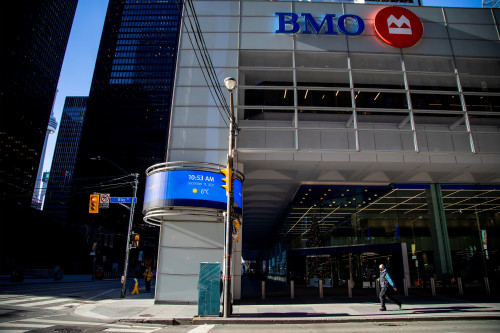By Nivedita Balu
TORONTO (Reuters) -Canada’s big banks are expected to have lowered loan-loss provisions in the third quarter from the prior quarter as U.S. tariffs have likely hurt their loan portfolios less than feared.
Canada’s big six banks are expected to set aside a total of C$5.22 billion in loan-loss provisions for the third quarter, compared to C$6.37 billion in the second quarter, according to data compiled by LSEG.
The banks ramped up provisions over the past few quarters, bracing for potential bad loans in the belief that a possible North American trade war would hurt the economy and cause defaults on commercial loans, credit cards and mortgages.
About 92% of Canadian exports by value entered the U.S. tariff-free in June because they were exempt from tariffs under the North American free trade agreement, data from the U.S. Census Bureau showed.
Prime Minister Mark Carney on Friday removed some retaliatory tariffs Canada had imposed on the United States.
“Three months later, we believe cooler heads may be prevailing with manageable reciprocal tariffs implemented between the CUSMA-bound countries,” Canaccord Genuity analyst Matthew Lee said, referring to the Canada, U.S. and Mexico trade zone.
Lee and other analysts expected the banks to benefit from a sequential decline in loan-loss provisions but for loan growth to remain weak due to low demand.
The Canadian banks will kick off earnings season on Tuesday beginning with Bank of Montreal and Bank of Nova Scotia.
Net interest income – the difference between what banks make on loans and pay out on deposits – is expected to grow between 9.3% and 57%.
Analysts expected the banks to get a boost from capital markets and wealth management segments, which benefit from fee income and rising demand.
The Canadian banks, traditionally some of the most well capitalized banks in the world, have built excess capital but have limited options to invest at home. They have turned to stock buybacks, deploying about C$4 billion cumulatively in the third quarter.
“Given the robust capital positions, we look forward to commentary on capital deployment plans by the banks’ management teams that can help the bank meet its medium-term financial targets,” Veritas analyst Shalabh Garg said.
The banks have expanded in the U.S. over the years as growth at home is limited in a saturated market and have also invested to build their wealth management business.
(Reporting by Nivedita Balu in Toronto; Editing by Cynthia Osterman)


